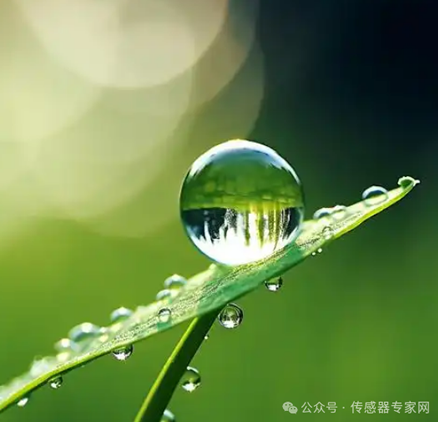At the microscopic scale that humans cannot perceive, water vapor molecules are quietly changing the physical properties of materials. The highly sensitive humidity sensor, this precise electronic device, is the "environmental sentinel" that captures these small changes. From semiconductor chip production workshops to meteorological satellites, from museum cultural relics warehouses to smart home systems, they build an intangible humidity monitoring network with nanosecond level response and one millionth accuracy.

· 1、 The 'Extreme Challenge' of Sensitivity
· Traditional humidity sensors are limited by material properties and often struggle to capture fluctuations of 0.1% relative humidity (RH). And high-sensitivity humidity sensors have broken through this bottleneck through nanotechnology:
· · Material innovation: High molecular gel such as agar is used as the sensing medium, and its hygroscopic expansion coefficient can reach 50 × 10 ⁻⁶⁶/% RH, which is far superior to traditional ceramic materials. When the environmental humidity increases from 30% to 80%, the volume change of the material can reach 0.5%. This characteristic is transformed into the cavity length change of the FP type fiber optic sensor, which increases the sensitivity by three times compared to traditional structures.
· Optical enhancement: Based on the Fabry Perot interference principle, the sensor converts humidity changes into spectral drift signals. In the 1250-1630nm wavelength range, the sensitivity can reach 7.15nm/% RH, which is equivalent to a spectral shift of 0.715nm for every 0.1% RH humidity change. This accuracy is close to the quantum noise limit.
· Multi physics field coupling: Some high-end models integrate MEMS microelectromechanical systems to achieve humidity detection through the mass load effect of silicon-based resonators. When water molecules are adsorbed on the surface of nanoscale cantilever beams, the resonance frequency shift is linearly related to humidity, and the detection limit can exceed 0.01% RH.
· 2、 The Art of Survival in Extreme Environments
· In the era of Industry 4.0, sensors need to face extreme challenges such as electromagnetic interference and chemical corrosion:
· Anti interference design: Adopting dual band compensation technology, temperature cross sensitivity is eliminated by measuring the spectral changes of two wavelengths, 1310nm and 1550nm. Experimental data shows that the humidity measurement error can be controlled within ± 1.5% RH within the temperature range of -40 ℃ to 125 ℃.
· Material protection: Surface coated with diamond-like carbon (DLC) film, which combines high hardness and chemical inertness. In the accelerated aging test at 85 ℃/85% RH, the lifespan of the sensor exceeded 100000 hours, which is more than 5 times that of ordinary models.
· Self cleaning mechanism: Imitate the hydrophobic effect of lotus leaves and construct superhydrophobic structures on the sensor surface through laser micro nano processing. When the contact angle of the water droplet is greater than 150 °, the condensed water can automatically roll off to avoid corrosion of the sensitive layer by liquid water.
· 3、 From Laboratory to Industrial Revolution
· The technological breakthrough of high-sensitivity humidity sensors is reshaping the operating rules of multiple industries:
· Semiconductor manufacturing: In the 3nm chip process, humidity fluctuations can cause a sudden change in the expansion coefficient of photoresist. By deploying a MEMS humidity sensor array, the fluctuation of cleanroom humidity is controlled within ± 0.5% RH, resulting in a 12% increase in yield rate.
· Cultural relic protection: The Palace Museum uses fiber optic humidity sensors to monitor the "Thousand Miles of Rivers and Mountains" in real time. When the humidity exceeds 65% RH, the system automatically starts the dehumidification equipment, reducing the risk of silk paintings cracking by 90%.
· Medical Health: The newborn respiratory monitor integrates a humidity sensor, which can detect changes in exhaled air humidity and provide 24-hour advance warning of respiratory distress syndrome, increasing the success rate of treatment by 35%.
· Agricultural Revolution: In the intelligent greenhouse of the Gobi Desert in Ningxia, sensor networks achieve soil moisture control with a precision of 0.1% RH, combined with drip irrigation systems, increasing the water-saving efficiency of vineyards by 40% and increasing sugar content by 2 Brix values.
· 4、 Future vision: Intelligent perception at the nanoscale
· With the development of two-dimensional materials and quantum sensing technology, humidity sensors are moving towards new dimensions:
· Two dimensional material revolution: The humidity response coefficient of single-layer MoS ₂ reaches 1200 ppm/% RH, which is 100 times that of traditional materials. By stacking transition metal sulfides with different layers, a multi parameter sensing array can be constructed to achieve synchronous detection of humidity, temperature, and gas.
· Self powered system: Based on the principle of triboelectric nanogenerator (TENG), the sensor is driven by the interface charge generated by humidity changes. This' passive 'design can operate continuously for more than 5 years in desert weather station testing, completely eliminating battery dependence.
· Biological Fusion: Drawing on the porous structure of insect antennae, develop biomimetic humidity sensors. By using 3D printing technology to construct a microporous array with a diameter of only 10 μ m, the capture efficiency of the sensor for trace water vapor is improved by three orders of magnitude.
· From the first discovery by humans that hair can stretch and contract with humidity, to now manipulating humidity perception at the atomic scale, this three century long technological evolution has always answered the same question: how to more accurately understand the environment in which we live. High sensitivity humidity sensors are not only the crystallization of technology, but also the microscopic window for humans to explore natural laws. When these nanoscale 'environmental sentinels' are deeply integrated with AI algorithms, a smart Earth that can autonomously regulate breathing may no longer be far away.
· Source: Sensor Expert Network
·



